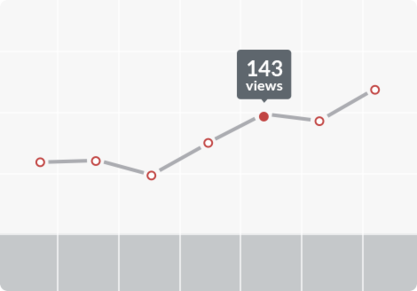
Data is everywhere. It is an inbound marketer’s best friend and can be used to create more personalized marketing that people love. For you, data is important for creating benchmarks and reporting on metrics that prove the success of your efforts.
First, let’s start with what metrics you should be tracking every month:
Monthly:
- Monthly Traffic Growth
- Monthly Lead Growth
- Visit-to-Lead Conversion Rate
- Lead-to-Customer Conversion Rate
- Average Leads Per Business Day Month-Over-Month Growth
- MQLs per month
- MQLs per channel
- Percentage of leads that are MQLs
Separate channels:
- Goals met per channel
- Close rate per channel
- Paid vs. Organic lead percentage
- Paid vs. Organic customer percentage
Content offers:
- Leads per offer
- Landing page submission rate
- Landing page new contact rate
- Call-to-action click through rate
- Call-to-action submission rate
- Traffic driving keywords
- Blogs with most leads (first-touch)
- Blogs with most customers (first-touch)
While these metrics are not the only metrics to look at, they are a good start.
When you’ve collected this data you can see what your prospects and leads are most interested in and where their interest lies. You can also tell whether or not a particular campaign worked in each channel. Utilize this to improve future campaigns. After seeing each data set remember to ask why it looks a particular way. If sudden changes occur, track for a month or two to pick out trends.
Whatever you do in marketing, use data.
How to Obtain The Data You Need
If you’re not already tracking your marketing in some way, you should start today. There are several tools available to help you capture this information, but SmartBug Media recommends using HubSpot for marketing analytics.
HubSpot offers:
- A dashboard with monthly analytics already put together
- Customizable reporting segmented by channel
- Landing page analytics
- Social media analytics (down to the message)
- Email analytics
- Website & SEO analytics
- Blogging analytics
And so much more! The best part about HubSpot is that it is all in one place, so you’re never switching between tools or knee-deep in spreadsheets. Everything is there for you and it works.
You should also include Google Analytics on your website for additional insights.
This article was syndicated from Business 2 Community: Marketing Data to Track and Leverage for Future Campaigns
More Technology & Innovation articles from Business 2 Community:
- Brand Advertisers: How to Hit KPIs on Mobile Programmatic and Mobile Video
- Tracking These 6 Types of Data Can Help You Recruit and Retain Star Employees
- 50 Mobile App Development Tips For Acquisition, Retention, and Everything in Between
- Centralizing Customer Profile Data: What You Need to Know
- The Assistive Technology Vertical and the Role of 3D Printing




